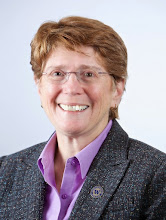BLT, the Blog of the Legal Times, today discusses mistakes made at the highest levels of the Justice Department -- the recent politicization of hiring within the department and the historic injustice of defending of the removal of 120,000 Japanese Americans and Japanese residents from their homes during World War II.
- Former AG Gonzales 'Disappointed' in His Own Conduct in DOJ Hiring. In a deposition for an employment case against DOJ, Alberto Gonzales "said for the first time that "I am disappointed that I didn't do things differently" to stop the politicization of the system of hiring career Justice Department attorneys through its honors program during his time in office."
- In DOJ Speech, Katyal Addresses Japanese Internment Cases. Neal Katyal, Acting Solicitor General, criticized the actions of the solicitor general during World War II who urged the Supreme Court to uphold Japanese American internment, failing to disclose a report from the Office of Naval Intelligence that undercut the rationale for the internment. See also yesterday's post, Katyal Speaks of SG 'Mistakes' in Japanese Internment Cases (linking to a post by Katyal on DOJ's blog).



